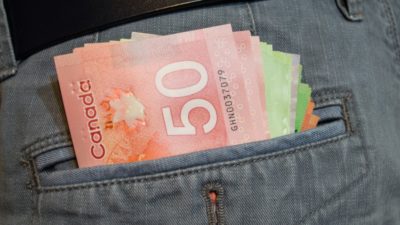The world is witnessing a scary episode. COVID-19 is slowing down the global economy while causing so many deaths at the same time. While countries can rebuild their economies, not one can reclaim the lives lost due to coronavirus.
Death toll
As I write this piece, global deaths have reached 64,606 while cases number 1,197,405. In Canada, the death toll is jumping and positive cases are rising as well. So far, COVID-19 has taken 161 lives and people that have tested positive are 11,131.
Senior residences in British Colombia, Ontario, and Quebec are now the nation’s hot spots now. Other areas of concern are the remote communities in the North that have scant healthcare services.
The coming week is going to be crucial, as the government is warning of a further spike in the number of deaths and infections. Canadians should brace for stark figures, as the situation appears to be worsening.
Debt rising
Governments around the world are pumping in money to prevent or stave off economic catastrophe as the pandemic rampage continues. Millions of people will be losing jobs and hard-hit industries will be shutting down.
A borrowing binge would ensue, creating mountains of debt that could match wartime levels. The last time national debts rose significantly was during the 1940s. One former European central bank head is predicting that high public debt will soon be a fixture in world economies.
Before the crisis, households and businesses in Canada are highly leveraged already. A debt-rating agency said the severity of the crisis will further raise concerns regarding credit worthiness. According to economists, Canada’s gross domestic product (GDP) will contract by 35% (annualized) in Q2 2020.
As the crisis drags on, companies and consumers will eventually default on loans. Thus, the Canadian government will have to borrow enormously and turn around to help businesses and households.
Danger zone
About two weeks ago, Sienna Senior Living (TSX:SIA) announced the temporary suspension of its Dividend Reinvestment Plan (DRIP). The reinstatement will be at the discretion of the company’s board of directors.
Meanwhile, this $699 million provider of senior housing and long-term care (LTC) services in Canada has more pressing concerns. The priority of Sienna is the health and safety of its residents, employees, and families. There’s a need to build an “iron ring” around the retirement homes and LTC facilities.
While the business will suffer, management assures investors that dividend payouts will continue. Sienna has a strong balance sheet, sufficient liquidity, and low payout ratio. More so, 56% of its portfolio is LTC and therefore, it will still receive full funding in case of vacancies or admission closures.
Besides, there’s a $50 million and $5 million emergency funding from the government in Ontario for LTC and retirement residences, respectively. Sienna is currently trading at $10.46, and has lost 41.85% year-to-date. The dividend yield, however, is a high 8.95% in case income investors would be interested.
Two-pronged fragility
The government needs to save lives and prevent the debt threat from mutating into an unmanageable level. Let’s hope the solutions come in the nick of time.








